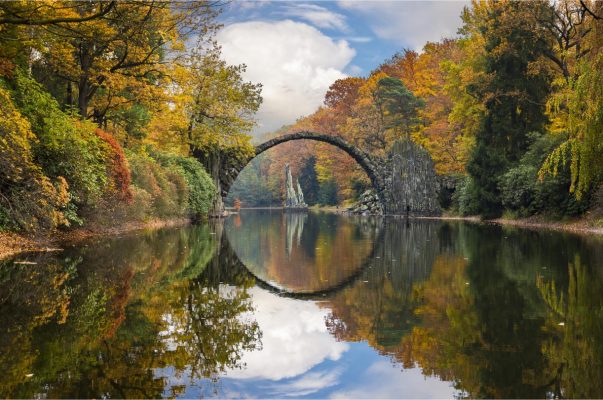Discover the stunning natural beauty of Germany’s most famous rivers and lakes.
Introduction
Germany is a country with a rich economy and a plethora of natural beauty, making it a popular destination for travelers. One of the most stunning natural wonders that should not be missed when visiting Germany is the exploration of Lake Constance, also known as Bodensee. This lake has captivated countless tourists with its serene and tranquil atmosphere, as well as its significant role in the region.
Exploring Lake Constance
Lake Constance, or Bodensee, is the largest freshwater lake in Germany, situated on the Rhine River at the northern foot of the legendary Alps. It consists of three main parts: Obersee (Upper Lake), Untersee (Lower Lake), and a section of the Rhine River called Seerhein. This expansive body of water lies at the border of Germany, Switzerland, and Austria, earning the title of a transnational lake.
- With a total area of 63 km in length and 14 km at its widest point, Lake Constance is a vital source of freshwater for numerous cities in southern Germany.
- The local residents around the lake have carefully preserved the surrounding environment, resulting in abundant natural resources such as wood, food, and fish.
- The lake is also home to rare and nearly extinct species, making it a significant ecological hotspot.
The Rhine River
The Rhine River, one of the longest and most important rivers in Europe, flows through six countries: Switzerland, Liechtenstein, Austria, Germany, France, and the Netherlands. It has a rich history and has been a vital trade route for centuries, playing a significant role in the economic and cultural development of the region. The river is also known for its picturesque landscapes, charming towns, and historic castles, making it a popular destination for river cruises and sightseeing tours. Whether you’re interested in exploring the river’s natural beauty, learning about its historical significance, or simply enjoying a leisurely boat ride, the Rhine River offers a diverse range of experiences for visitors.
Historical Significance
The Rhine River has been a strategic waterway since ancient times, serving as a key trade route for the Roman Empire and later playing a crucial role in the development of medieval Europe. The river has witnessed countless historical events and has been the setting for numerous battles and conflicts throughout the centuries. Today, visitors can explore the remnants of ancient fortifications, medieval castles, and quaint villages that line the riverbanks, offering a glimpse into the region’s rich and diverse history.
Natural Beauty
The Rhine River is not only historically significant but also boasts stunning natural beauty. The river winds its way through picturesque valleys, vineyards, and lush forests, offering breathtaking views at every turn. Along the river, visitors can also discover charming towns and cities, each with its own unique character and attractions. Whether you’re interested in hiking, cycling, or simply relaxing and taking in the scenery, the Rhine River provides ample opportunities to connect with nature and enjoy the great outdoors.
Overall, the Rhine River is a captivating destination that offers a blend of history, culture, and natural beauty. Whether you’re interested in exploring its historical significance, admiring its scenic landscapes, or simply enjoying a leisurely boat ride, the Rhine River has something to offer for every type of traveler. With its rich history, diverse landscapes, and charming towns, the Rhine River is a must-visit destination for anyone looking to experience the beauty and culture of Europe.
Lake Constance
Lake Constance, also known as Bodensee, is a stunning freshwater lake located at the northern foot of the Alps, bordering Germany, Switzerland, and Austria. It is the third largest lake in Central Europe and covers an area of 536 square kilometers. The lake is divided into two parts, Obersee (Upper Lake) and Untersee (Lower Lake), connected by the Seerhein river.
Scenic Beauty
Lake Constance is renowned for its picturesque landscapes, tranquil waters, and charming lakeside towns. The surrounding area is rich in cultural heritage, featuring historic castles, ancient monasteries, and vibrant gardens. The lake’s serene atmosphere and pristine natural beauty make it a popular destination for nature lovers and outdoor enthusiasts.
- Boat cruises
- Cycling and hiking trails
- Water sports
- Visits to historic landmarks
Ecological Importance
In addition to its recreational value, Lake Constance plays a vital role in supplying freshwater to the surrounding regions. The lake supports a diverse ecosystem, including rare species of fish and wildlife. Conservation efforts by local communities have helped preserve the environmental integrity of the lake, ensuring sustainable access to resources such as timber, food, and fish.
Overall, Lake Constance offers a harmonious blend of natural splendor, cultural heritage, and ecological significance, making it a must-visit destination for travelers seeking a truly immersive experience in the heart of Europe.
The Elbe River
The Elbe River, one of the major rivers in Central Europe, flows through the Czech Republic and Germany. It is the second-longest river in Germany and has played a significant role in the historical and cultural development of the region. The river is approximately 1,094 kilometers long and is known for its picturesque landscapes, charming towns, and rich biodiversity. The Elbe River is a popular destination for river cruises, offering travelers the opportunity to explore the stunning scenery and visit historic sites along its banks.
The Elbe River is home to a diverse range of flora and fauna, making it a haven for nature enthusiasts and wildlife lovers. The river basin supports a variety of ecosystems, including wetlands, forests, and meadows, providing habitat for numerous species of birds, fish, and other wildlife. The Elbe River also plays a crucial role in the conservation of endangered species and is a designated UNESCO Biosphere Reserve in certain areas. Visitors can enjoy birdwatching, hiking, and cycling along the river, immersing themselves in the natural beauty of the region.
The Elbe River has been an important trade route and transportation corridor for centuries, contributing to the economic development of the surrounding areas. The river connects major cities such as Prague and Dresden, serving as a vital artery for the transport of goods and people. Today, the Elbe River continues to be a lifeline for local communities, supporting activities such as fishing, agriculture, and tourism. Travelers can experience the vibrant culture and heritage of the region by exploring the historic towns and villages that have flourished along the banks of the Elbe River.
Lake Titisee
Lake Titisee is a stunning lake located in the Black Forest region of Germany. It is one of the largest natural lakes in the area and is known for its crystal-clear, turquoise waters. The lake is surrounded by picturesque forests and mountains, making it a popular destination for nature lovers and outdoor enthusiasts.
Activities
Visitors to Lake Titisee can enjoy a variety of activities, including boating, swimming, and fishing. There are also numerous hiking and cycling trails around the lake, providing opportunities for exploration and adventure. In the winter, the lake area becomes a popular destination for skiing and snowboarding, with several nearby ski resorts offering a range of winter sports activities.
Attractions
In addition to its natural beauty, Lake Titisee is also home to charming waterfront promenades, where visitors can stroll and take in the scenic views. The town of Titisee-Neustadt, located on the northern shore of the lake, offers a range of shops, restaurants, and cafes, making it a great place to relax and enjoy the local culture.
Overall, Lake Titisee is a must-visit destination for anyone seeking a peaceful and scenic retreat in the heart of the Black Forest. Whether you’re looking for outdoor adventure or simply want to relax and take in the beautiful surroundings, this stunning lake has something to offer for every traveler.
Conclusion
In conclusion, Hồ Bodensee in Germany is a natural masterpiece that offers a serene and picturesque environment for travelers to explore. Its vast expanse and stunning natural beauty make it a must-visit destination for those seeking tranquility and natural wonders. The lake not only serves as a source of freshwater for the surrounding cities but also holds great ecological significance, being home to rare and endangered species. Additionally, the surrounding area offers a rich cultural and historical experience, with ancient castles, picturesque villages, and outdoor museums to explore.
For travelers interested in experiencing the beauty of Hồ Bodensee, there are various tour options available, each offering a unique and immersive experience. Whether it’s a springtime visit to witness the blooming flowers, a summer adventure for water sports enthusiasts, or a winter tour to soak in the festive atmosphere, there are options to suit every preference. With its combination of natural beauty, cultural richness, and historical significance, Hồ Bodensee is a destination that promises an unforgettable travel experience.
It’s important to note that when planning a trip to Hồ Bodensee or any other destination, travelers should ensure they are using credible and reliable tour operators or travel agencies. Prioritize safety, comfort, and ethical travel practices to make the most of the experience while respecting the local environment and communities. By choosing reputable tour providers and staying informed about the destination, travelers can ensure a fulfilling and responsible travel experience.
In conclusion, some of the most famous and beautiful natural rivers and lakes in Germany include the Rhine, the Moselle, and Lake Constance. These stunning bodies of water are not only picturesque but also offer a range of recreational activities for locals and tourists alike.





